More on LED Failures
Disclaimer: This is a rant about poor thermal design - even in 2021 top brands engineers dont get it right..
In 2018 i wrote about failures on LEDs i use for lighting . Over the Years i too often had to exchange them - much earlier than the typically claimed lifetime of 15000+ hours suggests.
Unfortunatly, some of the LEDs were defect within a year, and we’re not talking about no-name el-cheapo stuff but top brands as Osram.
All are GU10 Socket type (230 V AC) used in metal case outdoor fixtures in a bone dry location high at the wall directly under the roof.
The outside lights are on from dusk till dawn - that means an on time of 4200 hours per year. They should last more than 3 years.
The bad bunch
Today i took the time to crack open the six LEDs that failed this so far year.
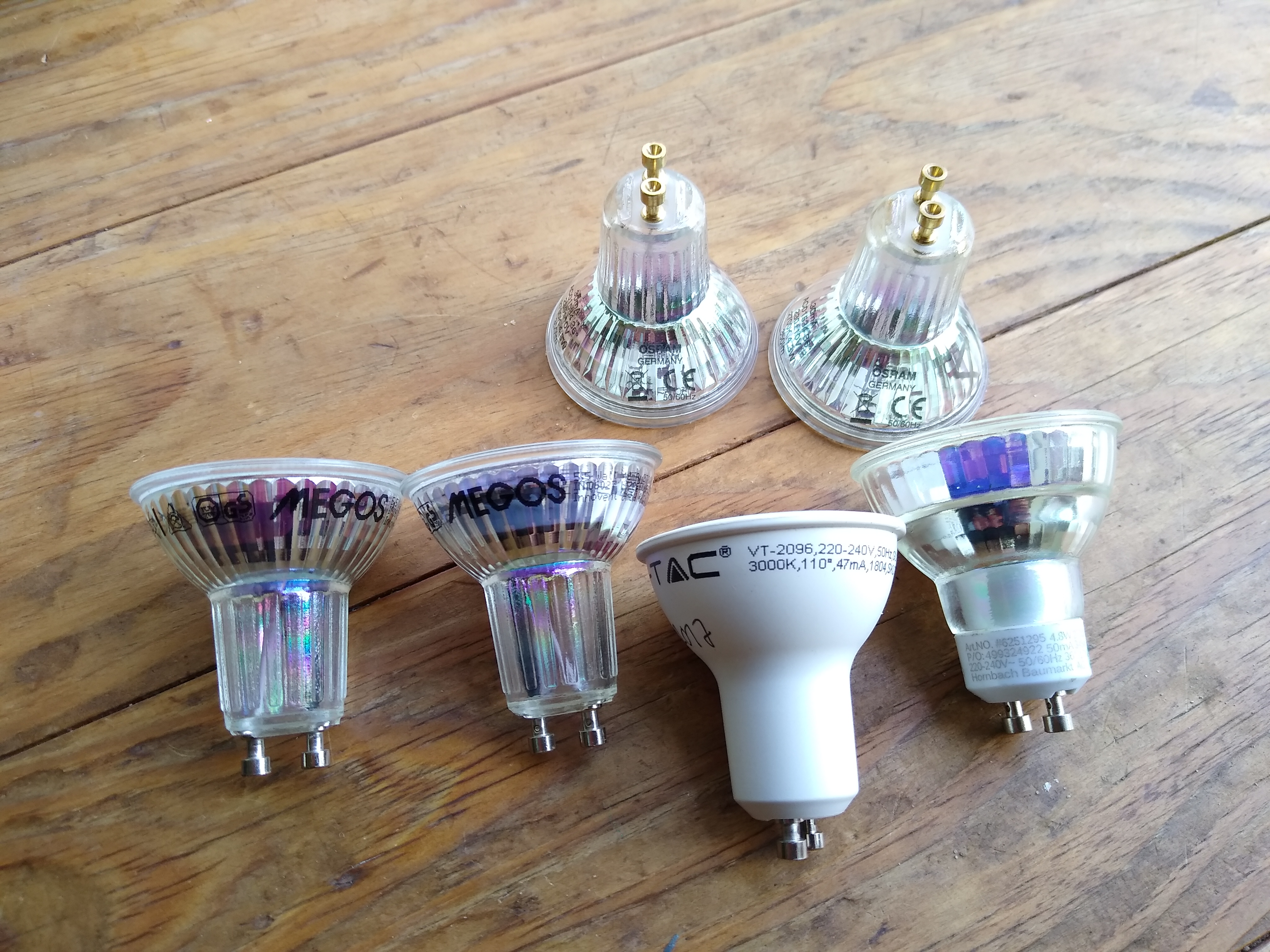
They brands are
- 2 Osram ACO 1534 4.3W / 350lm
- 2 Megos IN106027 5.5W / 300lm
- 1 Hornbach #6251295 4.8W / 345lm
- 1 VTAC VT-2096 6 W / 500lm
Fun Fact #1: The one with the longest run time of this years faulty LEDs batch was the VTAC-2096 which lived 5 years since 2017. Another one of this type did last only one year until 2018.
Fun Fact #2: No product data is available anymore on the web - except for the Hornbach brand LED which still can be shopped.
Possible Reasons for Failure
There are some possible reasons for failure with increasing probability
- bad components
- moisture and subsequent short circuit
- overvoltage (transient)
- overtemperature
I believe the major reason is overtemperature. Why ? Because the poor thermal design observed in most LEDs i cracked open. The LEDs are made cheap and they try max out the lumen in a tiny case which must be insulated agains mains voltage. This is, because those LEDs are often a direct replacement for exposed halogen lights which could be touched.
All the short lived ( lasting a year) LEDs of this batch had a glass case. Glass is a good thermal insulator.
The 5 years living VTAC had a plastic coated aluminum case with the LED board thermoglued to the case. By far the best thermal design of the six.
But lets start with the worst:
Osram ACO 1534 4.3W / 350lm
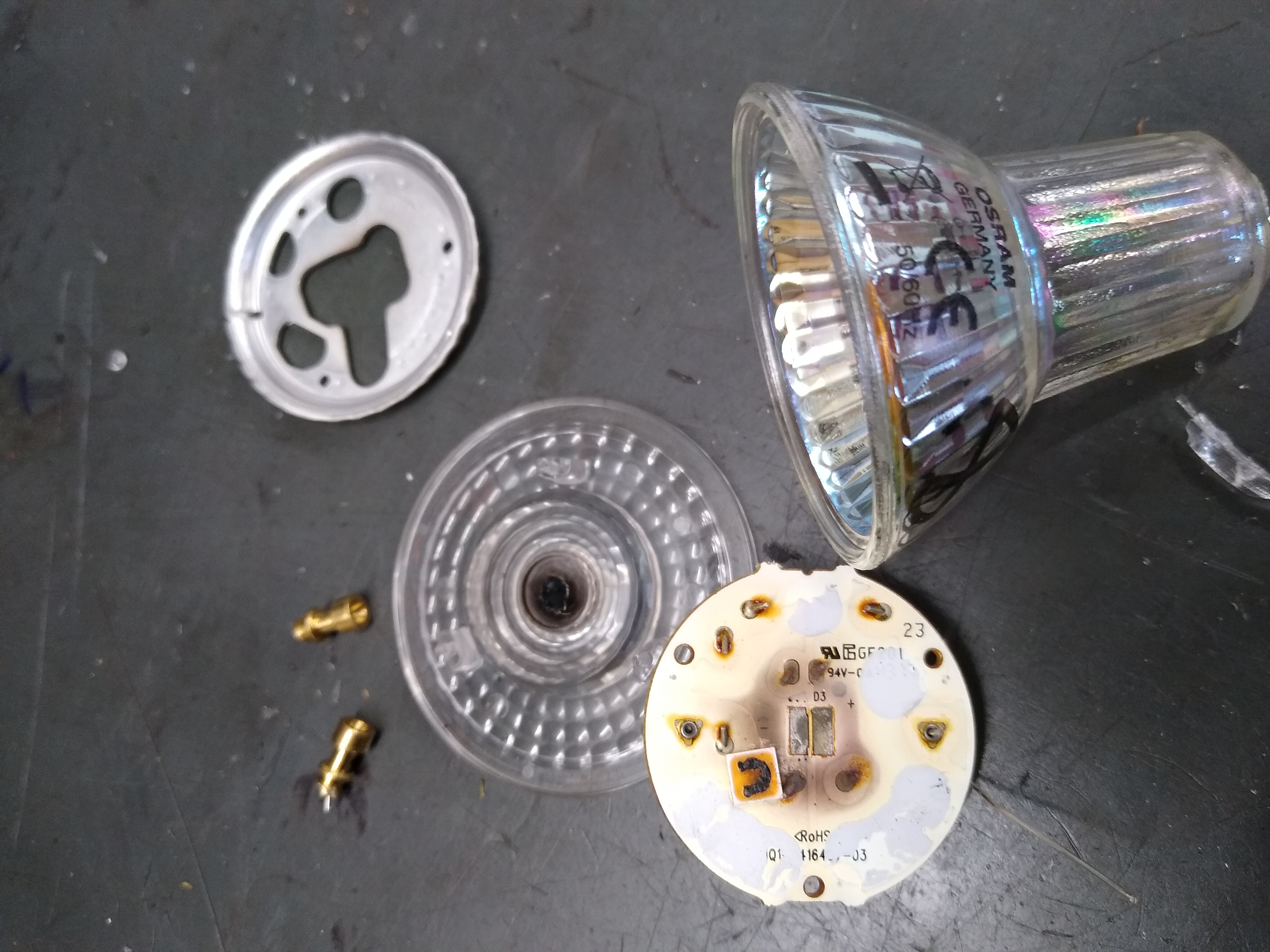
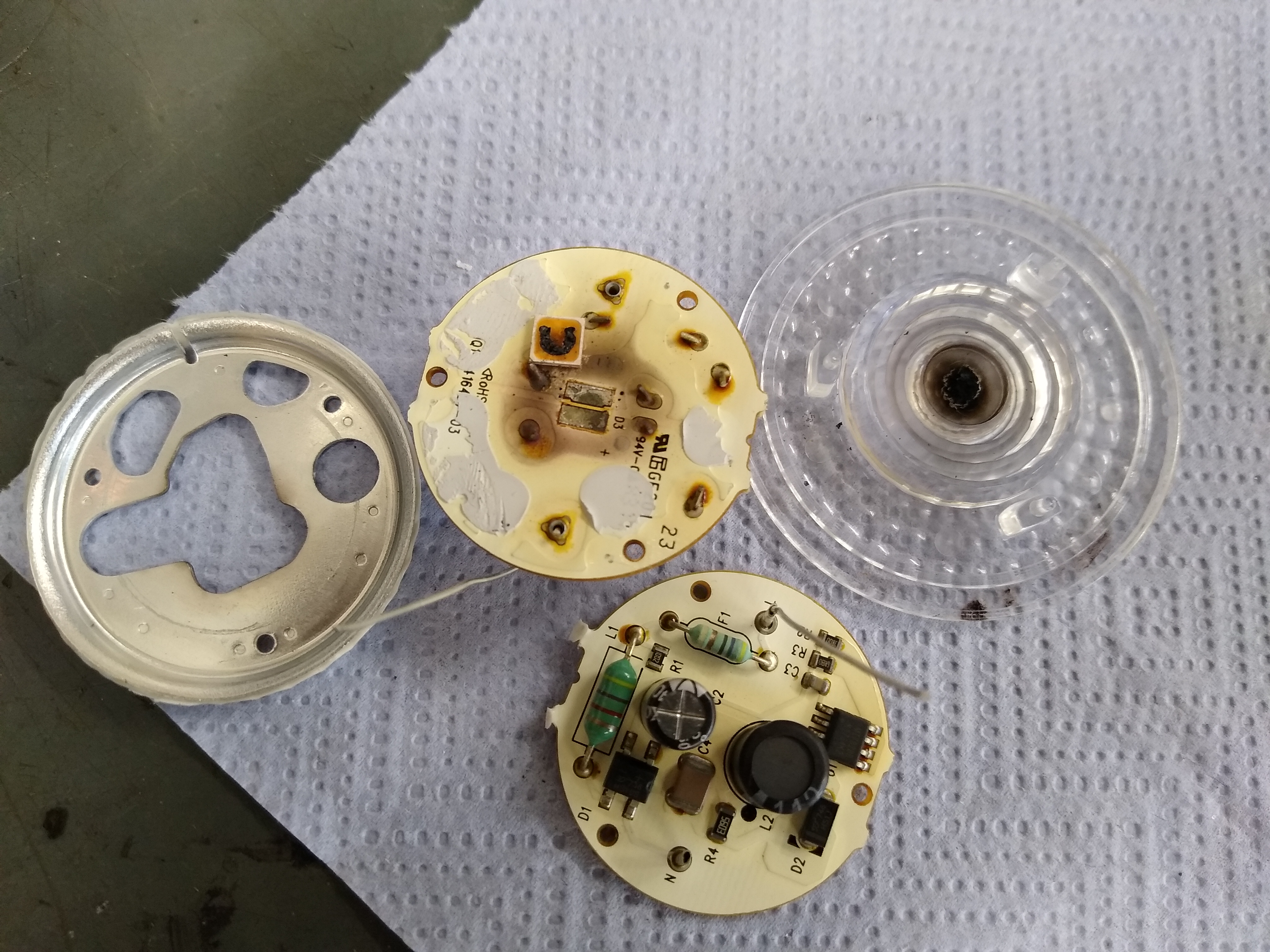 The tiny “heat sink” is just sticked to the PCB with some specks of thermal glue - there are holes for screws, but no screws.
The tiny “heat sink” is just sticked to the PCB with some specks of thermal glue - there are holes for screws, but no screws.
In both LEDs the heat sink was loose and had no contact to the PCB anymore.
In one case the LED chip desoldered itself and fell off. It even left burn marks on the lens.
Overall the thermal design is an epic fail.
The circuit is a primary switchmode design driving a single chip with several LEDs
Megos IN106027 5.5W / 300lm
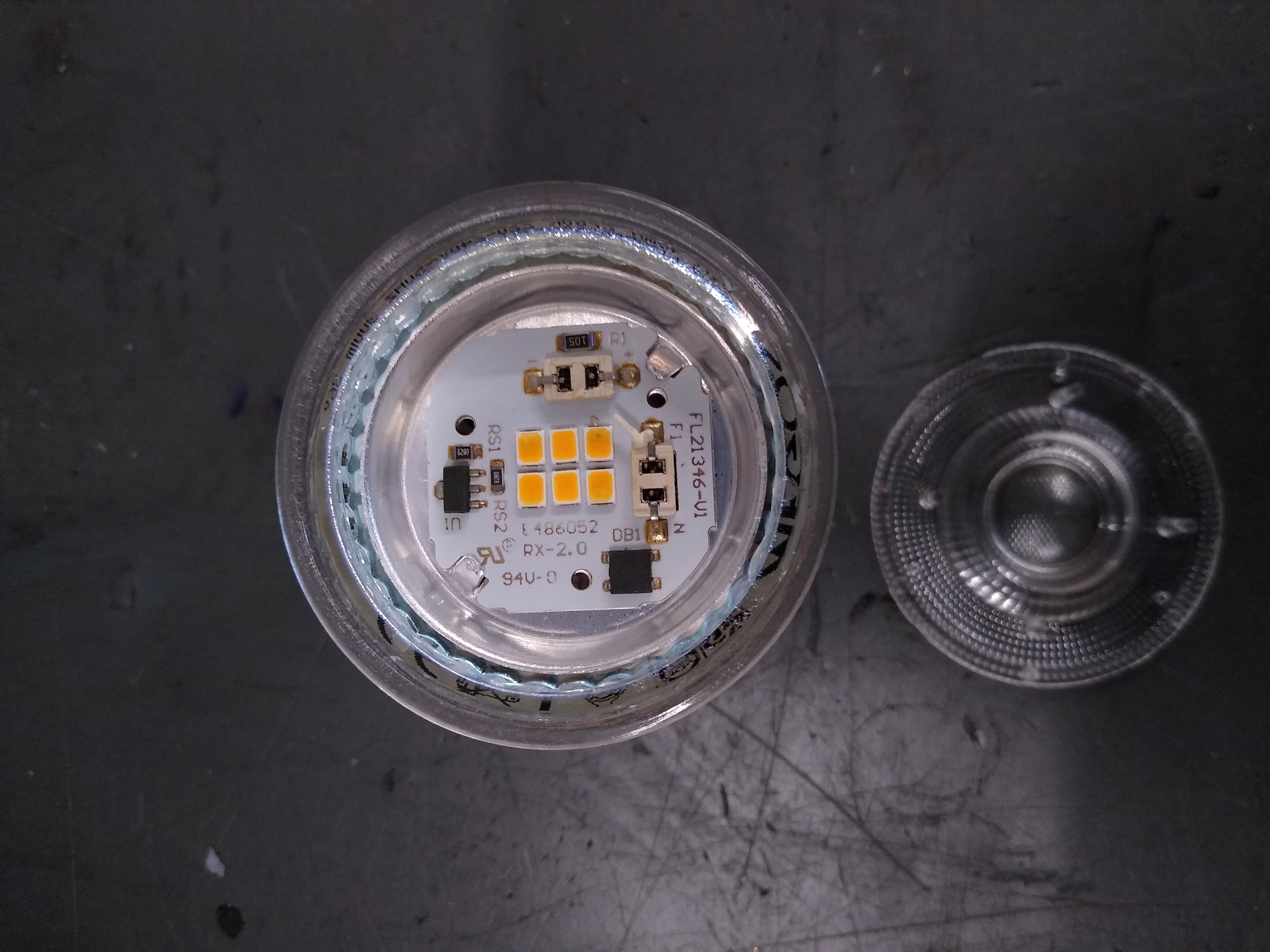 The very thin PCB is thermoglued to a tiny aluminum can which is glued to the glass case. This is much better thermal design than seen at the Osram ACO 1534.
The very thin PCB is thermoglued to a tiny aluminum can which is glued to the glass case. This is much better thermal design than seen at the Osram ACO 1534.
And nothing came loose ;)
The circuit is probably a primary switcher driving 6 LED chips - i didnt notice a coil though.
Hornbach #6251295 4.8W / 345lm
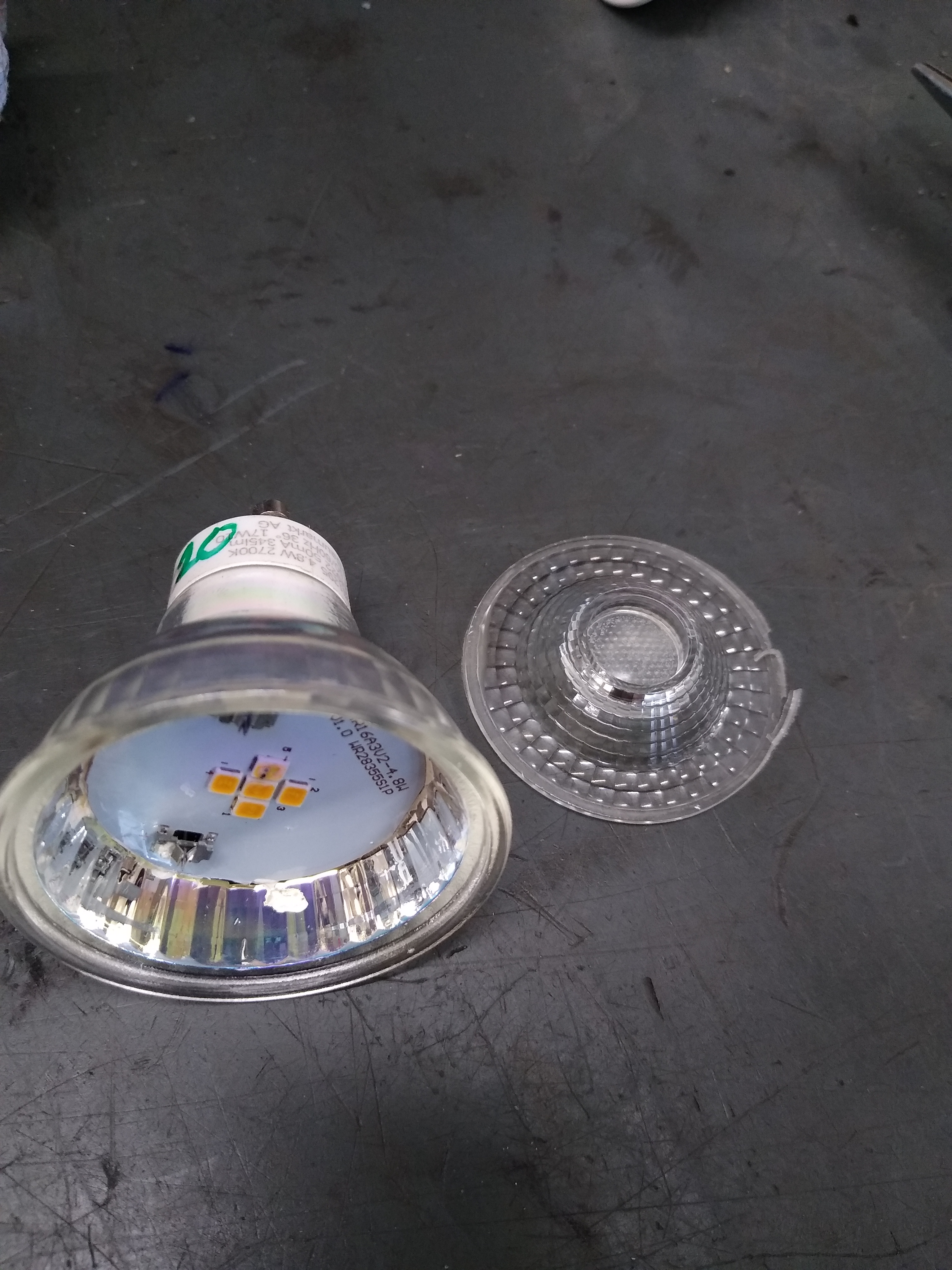
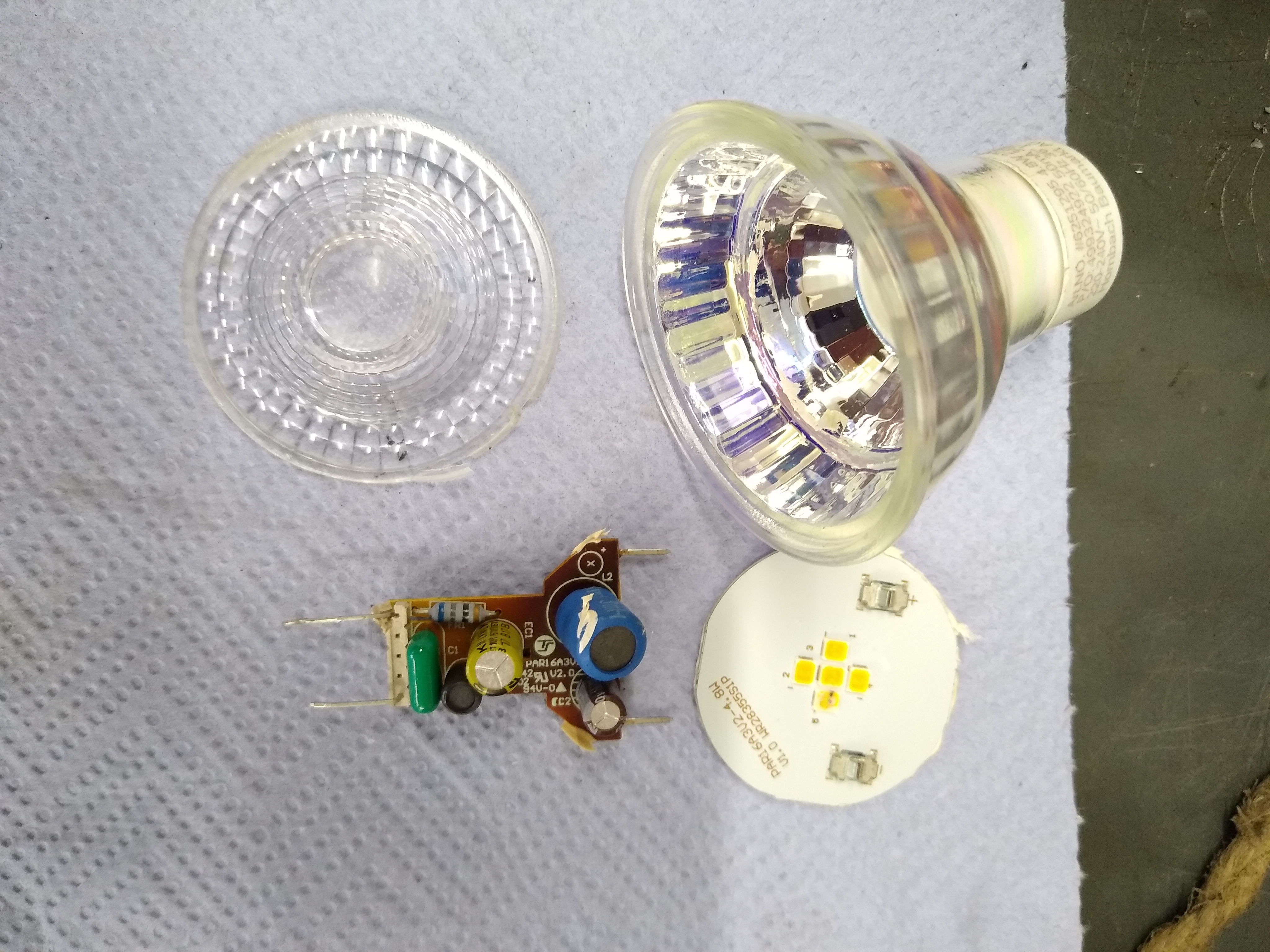 A primary switcher driving 5 chips on a thick aluminum core board.
A primary switcher driving 5 chips on a thick aluminum core board.
VTAC VT-2096 6 W / 500lm
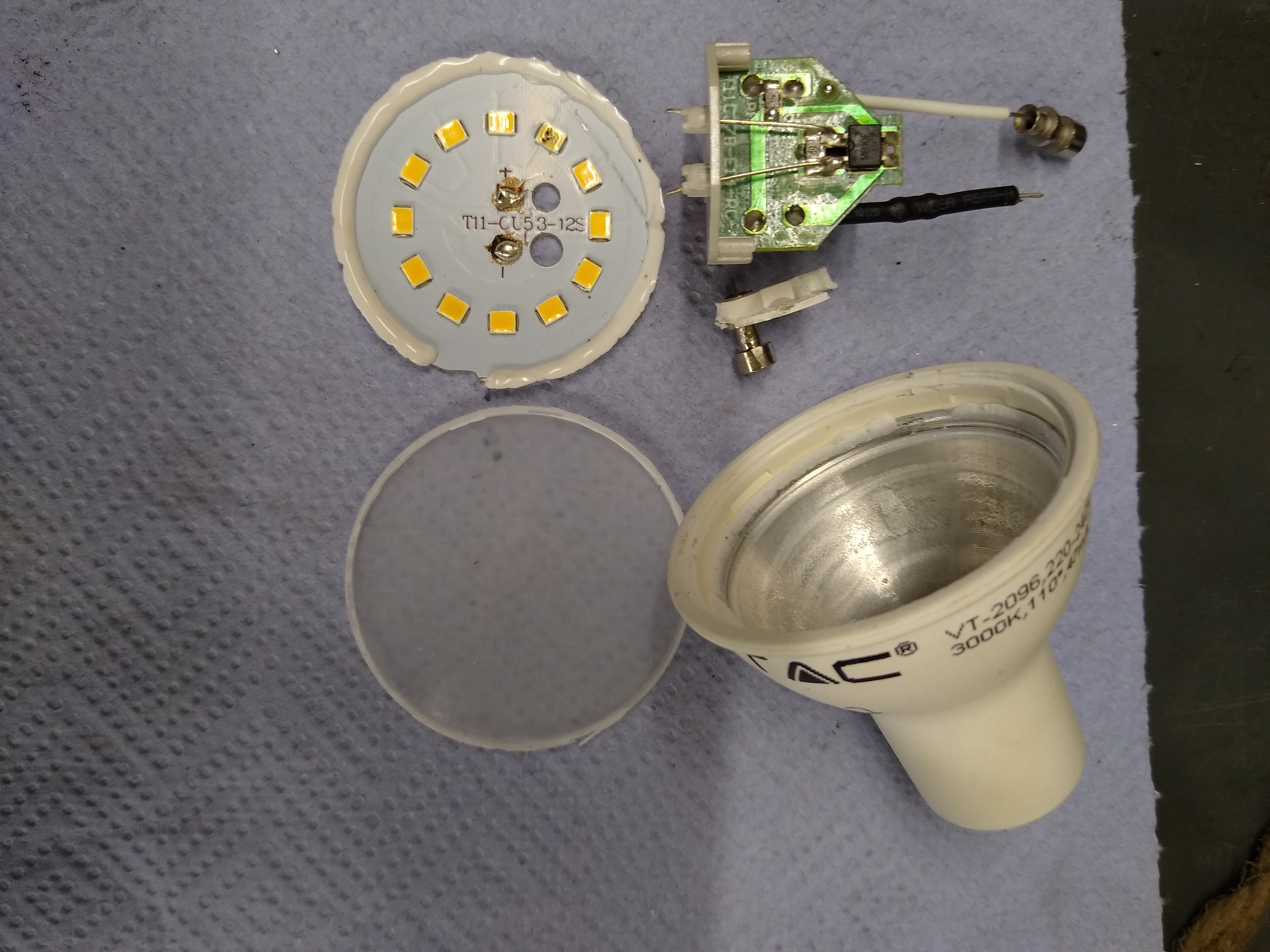 Plastic coated aluminum case with the LED board thermoglued to the case. The heat dissipation is superior to the others, the circuit design is not. It is a capacitor divider / rectifier type driving 12 chips. The capacitor is the weak spot and failed (after 5 years).
Plastic coated aluminum case with the LED board thermoglued to the case. The heat dissipation is superior to the others, the circuit design is not. It is a capacitor divider / rectifier type driving 12 chips. The capacitor is the weak spot and failed (after 5 years).
Lessons learned
- dont buy glass cased LEDs, go for metal case if possible
- top brands are not worth the price
- the cheaper the better - they will fail anyway
- if you want it really long lasting, desing your own (i did this to upgrade a GU 9 based halogen wall light, used COB LEDs with a proper heat sink driven by a meanwell brand constant current source. I has to fail yet, since ~ 8 years )